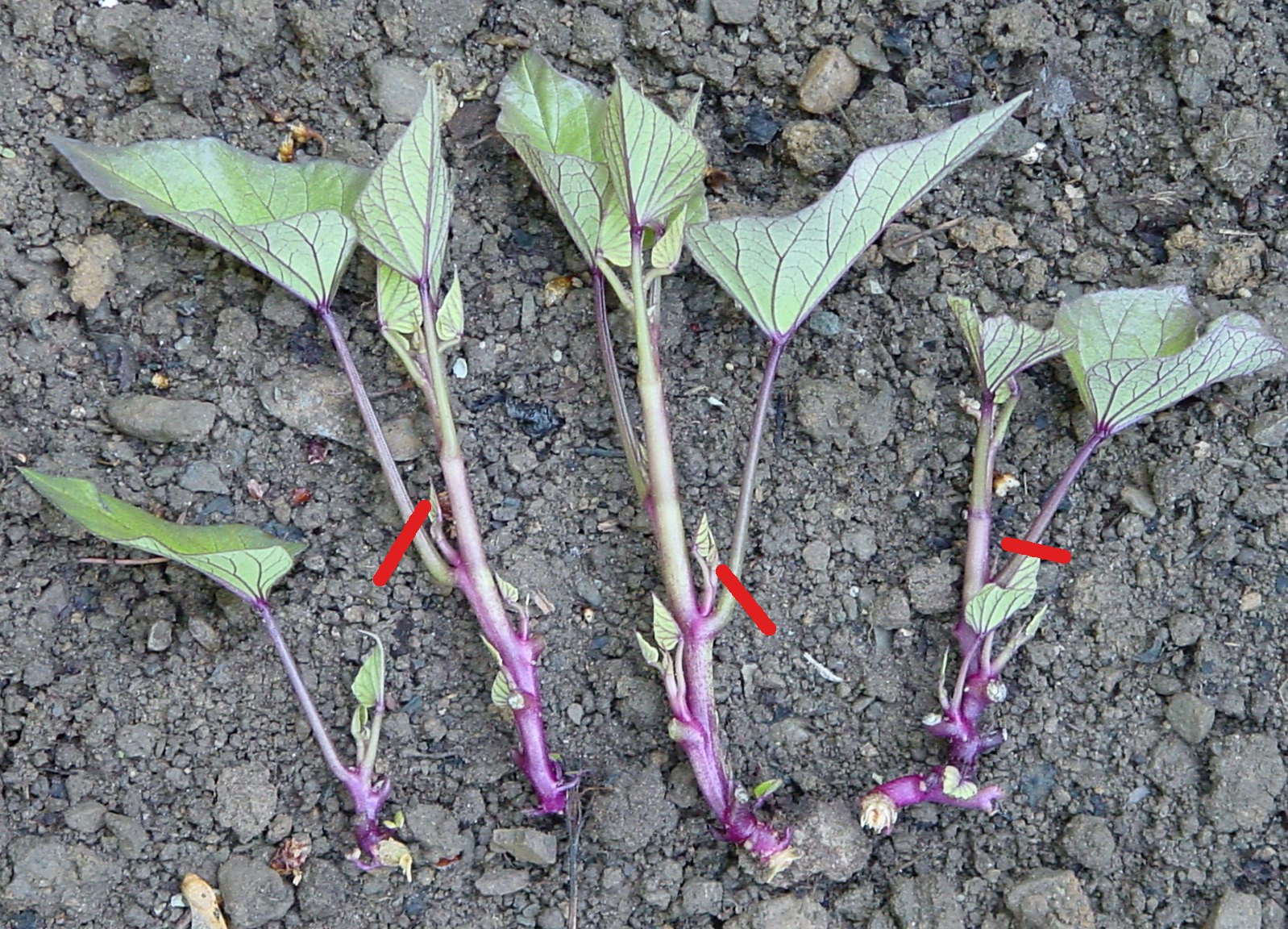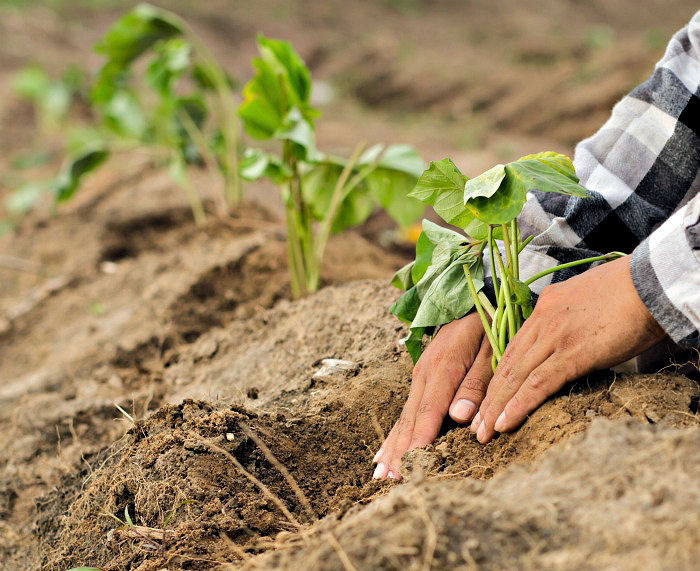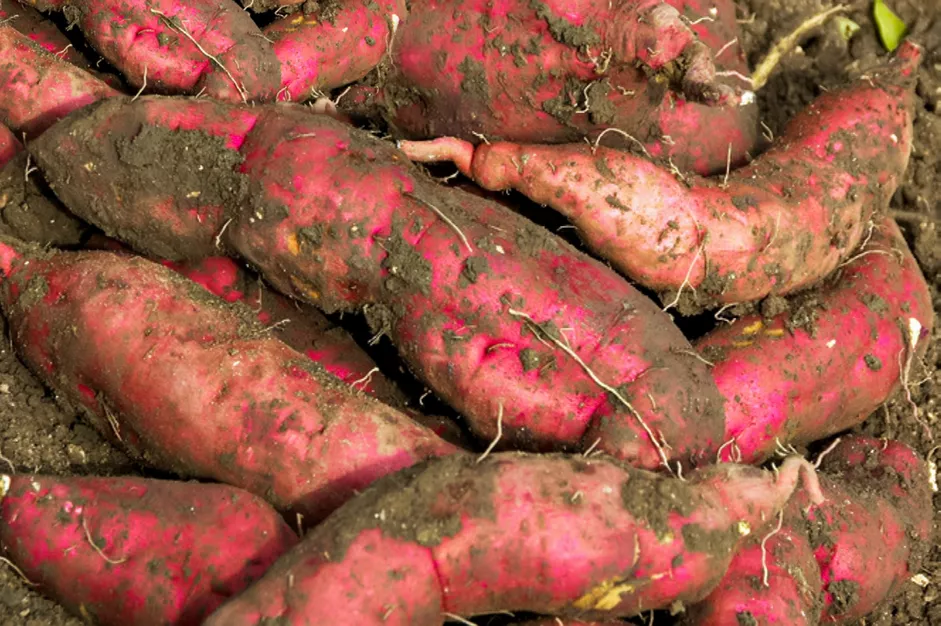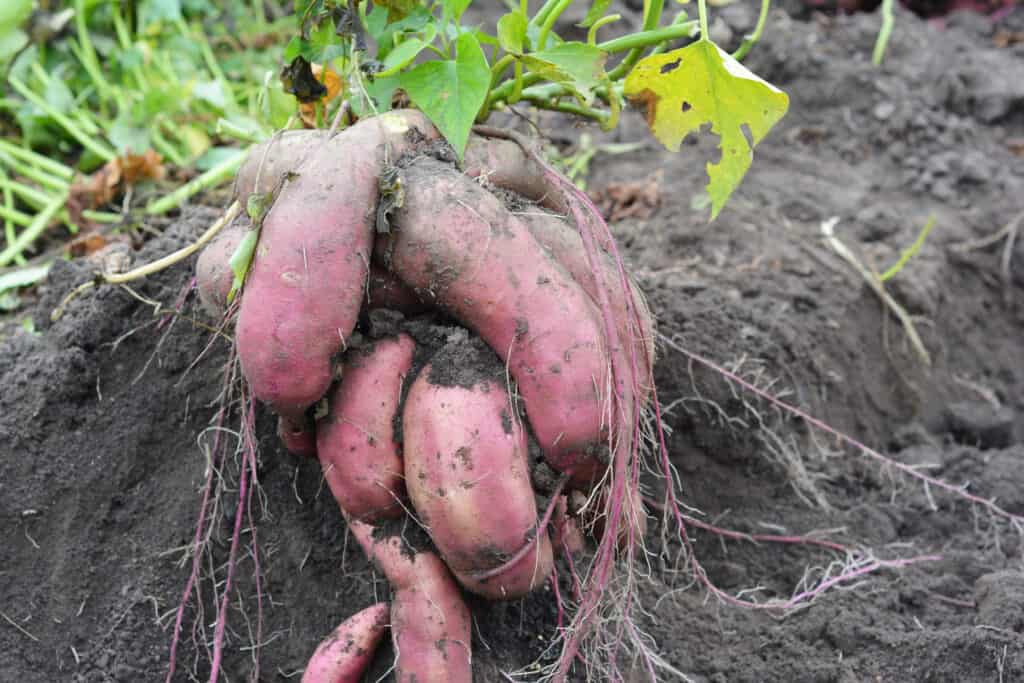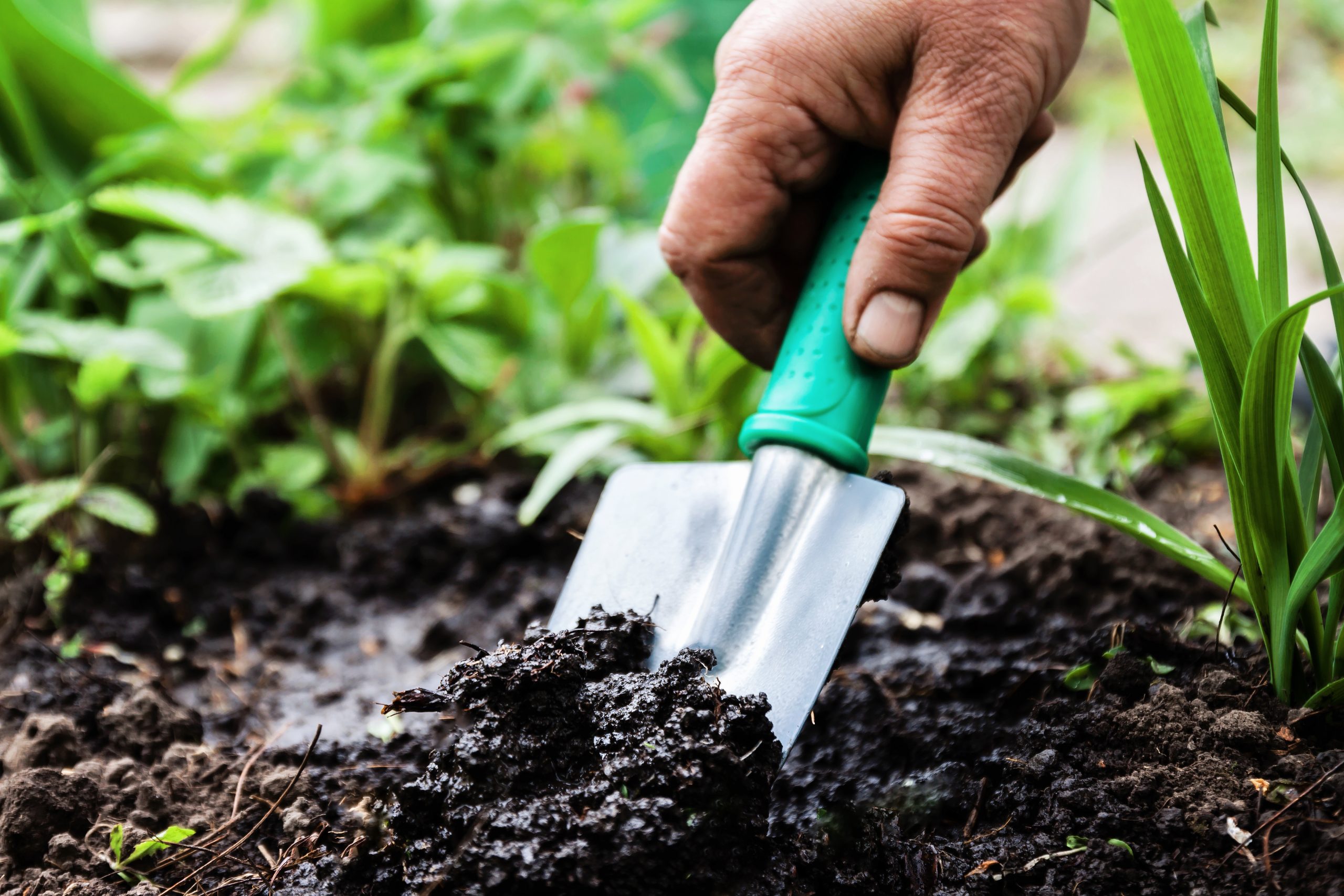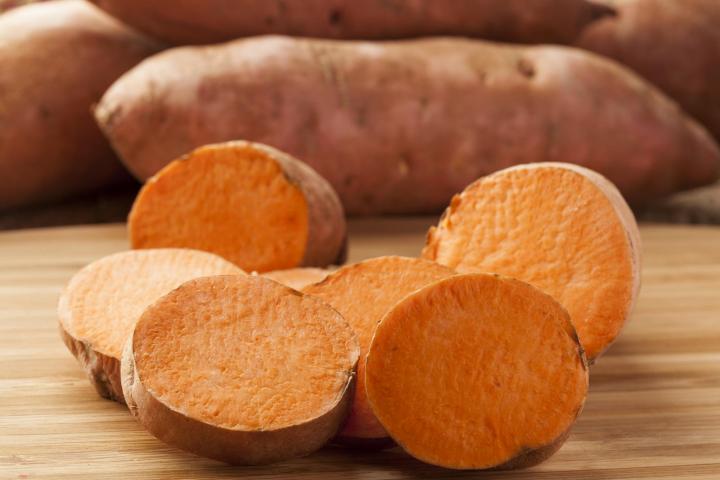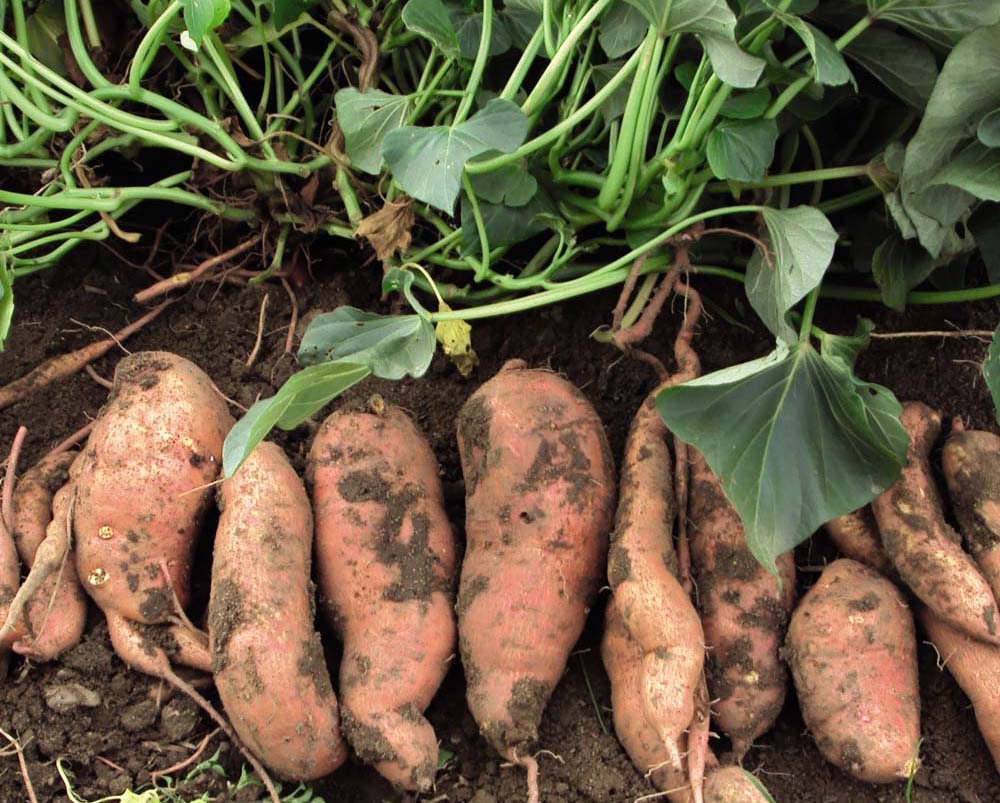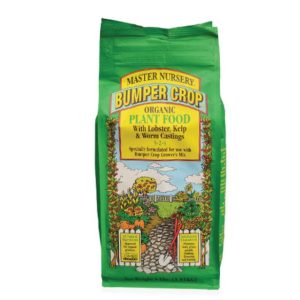Slips
Even though they are extremely frost-sensitive, they can be grown successfully from slips in cooler climates, provided a few key conditions are met.
Sweet potatoes are not grown from seed. They’re grown from slips, which are sprouts grown from existing sweet potatoes.
They can also be grown in raised beds or large containers. Plant in an area with full sun and afternoon shade.
